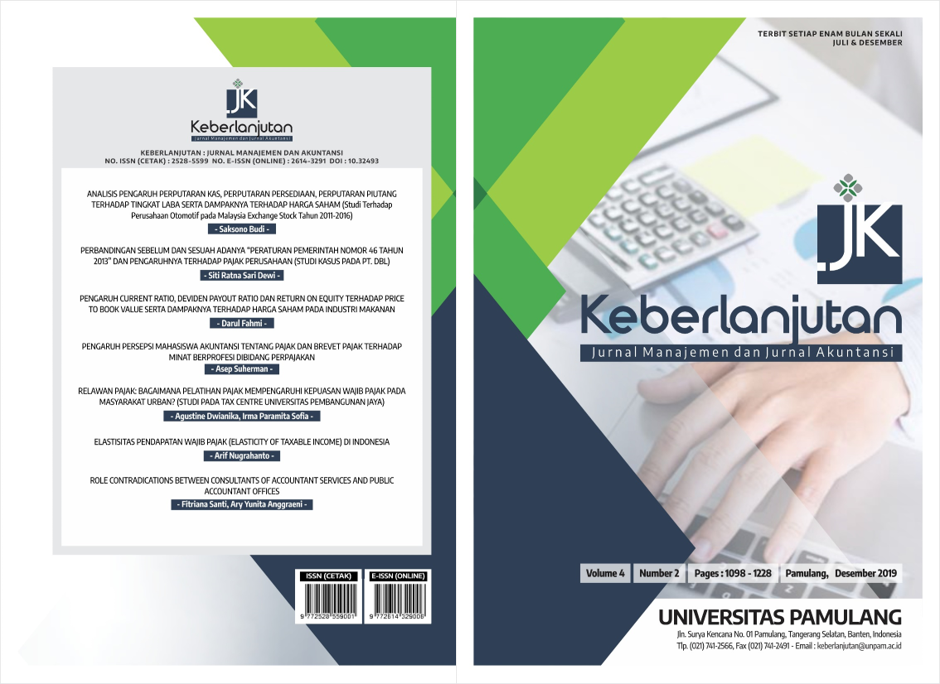ELASTISITAS PENDAPATAN WAJIB PAJAK (ELASTICITY OF TAXABLE INCOME) DI INDONESIA
DOI:
https://doi.org/10.32493/keberlanjutan.v4i2.y2019.p1192-1217Keywords:
Elasticity of Taxable income, Taxpayers’ Responses, Changes of tax rate, Indonesia.Abstract
Abstract
The responses of taxpayers due to the changes in tax rates have attracted the curiosity of many economists. The magnitude of taxpayers’ responses is substantially considered to be very importance in the formulation of tax and transfer policy (Giertz, 2009). The fundamental analysis on how to see the respond of taxpayers due to any changes in tax rates uses elasticity of labor supply, which estimates the changes of working hours with respect to the changes in tax rates. Because people’s response to a tax change may take several forms, including a labor supply response, elasticity of labor supply must be read carefully, as pertaining only to specific circumstances. Then, the elasticity of taxable income, which was originated by Lindsey (1986), is used and introduced to overcome such restrictions.
Using very rich panel data of Indonesian taxpayers from 2007 to 2010, this study generates numerous findings about the elasticity of taxable income. The extent of taxpayers’ response deeply depends on how the secular trend of income is isolated and controlled. Without income control, the elasticity of taxable income is 0.289, while using a 10-spline of log of income, the extent is 0.368. Moreover, the study also uses net income as complement of the core estimation.
This study identifies that the elasticity of taxable income in Indonesia is in the range of 0.302-0.368 depending on the income definition applied. The findings confirm with most literature on this subject and closely near to what was specified by Saez, et. al (2010) as “a consensus value.†But it should be underlined that these magnitudes are just in the short run period. This also found that the short run and medium period produce varying magnitudes. The medium run period calculation generates the number of close to zero. It might be due to the existence of income shifting, as stated by Goolsbee (2000). Another argument is myopic phenomenon. As taxpayers only focus on the situation that just happen surroundings them.
The difference in the effect highpoints what Slemrod (2001) said that the magnitude of reported income elasticity is not an unchanged parameter; indeed, it is subject to government policy. Moreover, the surroundings of the tax reform and after all may also have influences.
Downloads
Published
How to Cite
Issue
Section
License
Articles publised in Keberlanjutan : Jurnal Manajemen dan Jurnal Akuntansi are licensed under Creative Commons Attribution 4.0 International License. You are free to :
- Share — copy and redistribute the material in any medium or format
- Adapt — remix, transform, and build upon the material for any purpose, even commercially.
Copyright on articles is retained by the respective author(s), without restrictions. A non-exclusive license is granted to Keberlanjutan : Jurnal Manajemen dan Jurnal Akuntansi to publish the article and identify itself as its original publisher, along with the commercial right to include the article in a hardcopy issue for sale to libraries and individuals.
By publishing in Keberlanjutan : Jurnal Manajemen dan Jurnal Akuntansi, authors grant any third party the right to use their article to the extent provided by the Creative Commons Attribution 4.0 International License.


